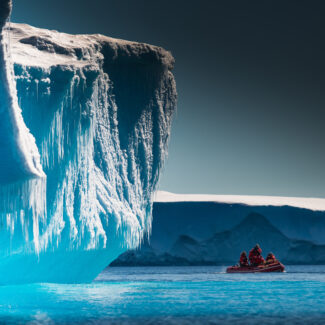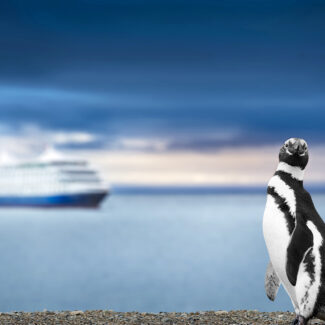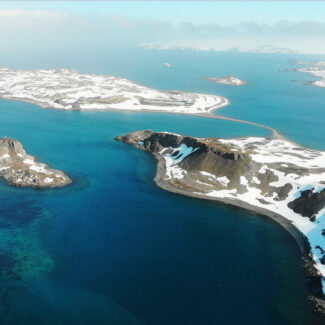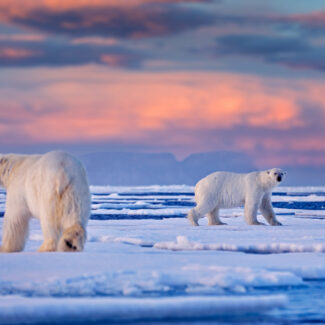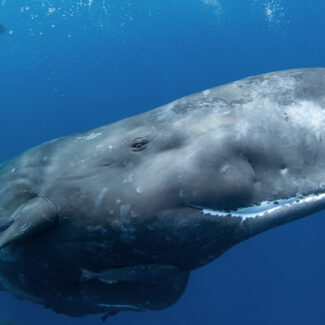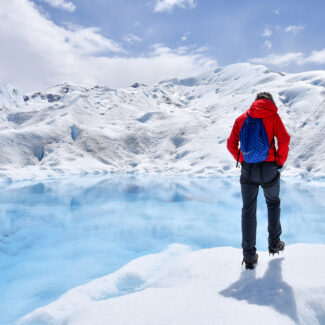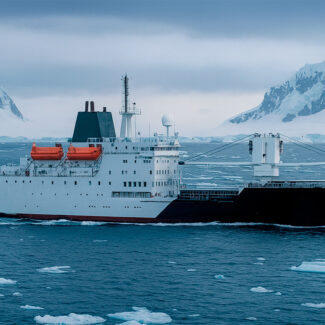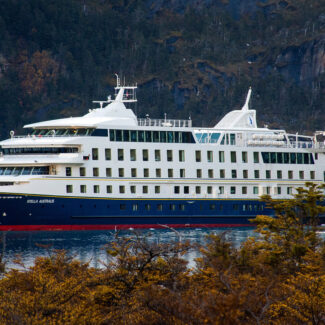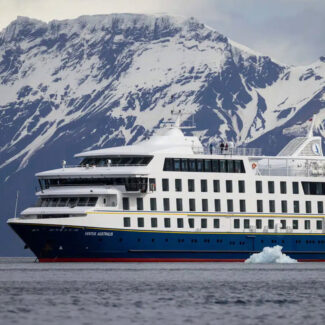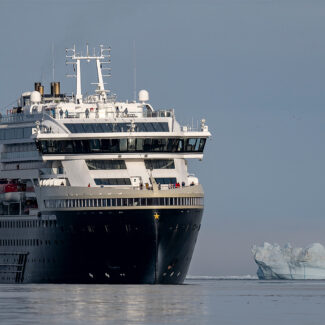5 Doomed Polar Expeditions That Failed Fatally
The polar realms—the Arctic and the Antarctic, forming the icy caps of our planet—are among the harshest and most remote on Earth. While native peoples such as the Inuit and Yupik have called the Arctic home for thousands of years, it has often been presented as a hostile wilderness, especially to those Western explorers keen to reach the North Pole and parse out the Northwest (and Northeast) Passage.
On the opposite side of the world, the Antarctic—which lacked an indigenous human population—presented an even more challenging backcountry.
The lives of many explorers and voyagers have been lost in the Arctic and Antarctic. The following is a roll call of some of the most notable doomed expeditions in the polar latitudes.
A haunting relic of ambition frozen in time. This ship whispers tales of the unforgiving Arctic and the perilous journeys undertaken by those who dared to challenge its icy grip. Their stories, though tragic, serve as stark reminders of the raw power of the polar regions.
Doomed Arctic Expeditions
Henry Hudson & the Discovery (1610-1611)
The English explorer Henry Hudson devoted years to finding both the Northeast Passage and the Northwest Passage: Arctic sea lanes that could link Europe and East Asia on a much shorter route than the standard journey across the Atlantic and around Cape Horn to reach the Pacific. In April 1610, Hudson embarked aboard the Discovery to investigate a channel in the Canadian Arctic that had been documented (in the very same ship, in fact) by his fellow Englishman George Weymouth in 1602: the strait that, in time, would come to be known as Hudson Strait. Hudson and others theorized this waterway could lead the way to a Northwest Passage.
Hudson and his crew journeyed up the strait and entered the huge inland sea later known as Hudson Bay. The Discovery drifted along the shores of the bay into the southeastern arm of James Bay and had made no progress finding an outlet into the Northwest Passage by the time winter overtook it.
It proved to be an edgy winter in Hudson Bay for the Discovery expedition, and it brewed up a mutiny that erupted the following summer. Two mutineers, Henry Green and Robert Juet, directed Hudson, his son, and seven other crew members into a small open boat and sent them drifting away. They vanished without a trace—save, perhaps, for a shelter found on a 1631-1632 expedition.
The Discovery made the return voyage to England, but Green and Juet, with others, were killed in a skirmish with Inuit before the ship left the Canadian Arctic.
The celebrated and unfortunate navigator,” Henry Hudson, depicted here abandoned by his crew in the vast expanse of Hudson’s Bay.
Source: Lewis & Brown, lithographer, Public domain, via Wikimedia Commons
The Franklin Expedition (1845-1848)
Among the most infamous polar tragedies was the British expedition led by Sir John Franklin in 1845 with the aim, like Hudson long before, of successfully transiting the Northwest Passage through the Canadian Arctic Archipelago. Embarking on the ships Erebus and Terror, which had previously journeyed to the Antarctic and were specially modified for polar voyaging, the Franklin Expedition was last spotted in July 1845 by two whaleships in Baffin Bay, then utterly disappeared.
A major search effort was launched that saw dozens of expeditions sent to investigate Franklin’s fate between 1847 and 1859, when the British government formally stopped looking; other search parties, however, continued to venture to the Canadian High Arctic after that, seeking clues. Between skeletal remains, artifacts, notes left by the expedition, and (crucially) the accounts of native Inuit peoples, some semblance of a story was pieced together: one of ice-trapped ships, starvation, lead poisoning (perhaps from poorly soldered ration tins), and even cannibalism. All members of the Franklin Expedition perished in the Arctic—including Franklin himself, who died aboard the Erebus on June 11, 1847, according to the momentous “Victory Point Note” found by a search party on King William Island.
Inuit reports were instrumental in directing the modern-day search efforts that discovered the submerged wreck of the Erebus in 2014 and that of the Terror in 2016. Archaeologists continue to study these protected heritage sites, with additional clues as to the fate of the Franklin Expedition still likely to come from the Arctic seabed.
The imposing HMS Terror and HMS Erebus set sail with high hopes, unaware of the tragic fate that awaited them in the icy labyrinth of the Arctic. This image offers a glimpse of the powerful vessels that embarked on one of history’s most haunting polar mysteries.
Source: Illustrated London News – Getty, Public domain, via Wikimedia Commons
The Andrée Expedition (1897)
Salomon August Andrée and two companions, Nils Stringberg and Knut Frænkel, made a bold try for the yet-unconquered North Pole in the summer of 1897 via hydrogen balloon. But their craft, the Eagle, crash-landed on Arctic Ocean sea ice a few days after taking off from Danes Island in Svalbard, and it took decades for the fate of the three men to be uncovered.
In August 1930, Norwegian sealers chanced upon a campsite and human remains on the farflung isle of Kvitøya (part of the Svalbard archipelago). Apparently Andrée, Stringberg, and Frænkel reached the island after an arduous over-ice journey, and appear to have died not long thereafter: possibly from trichinosis contracted by consuming the meat of a polar bear.
Doomed Antarctic Expeditions
Sir Robert Falcon Scott & the Terra Nova Expedition (1910-1913)
The famous race for the South Pole waged between the Norwegian Roald Amundsen’s Fram expedition and Sir Robert Falcon Scott’s British Antarctic Expedition aboard the Terra Nova is one of the most gripping sagas in polar exploration.
Amundsen had actually originally been aiming for the North Pole, but, discouraged by reports that two American explorers, Frederick Cook and Robert Peary, were both claiming to have reached that sought-after point, switched plans and beelined for Antarctica.
Amundsen, who made his approach from the Bay of Whales and via the Ross Ice Shelf and Axel Heiberg Glacier, was ultimately successful: He and several other members of his well-equipped and well-oiled team were the first people to reach the South Pole, on December 14, 1911.
Scott started from Ross Island in McMurdo Sound and followed a route up the Beardmore Glacier to reach the Antarctic Polar Plateau on which the South Pole sits. His polar party traveled with fewer sled dogs than Amundsen’s and was hampered by malfunctioning motor sleds and the decision to haul supplies using ponies, which proved ill-suited to the conditions. Scott and four companions—Captain Lawrence Oates, Henry “Birdie” Bowers, Edgar Evans, and Edward Wilson—reached the South Pole on January 16, 1912, finding there Amundsen’s flag and tent and realizing they’d lost the race.
The disappointed men’s return journey was hampered by bad weather and their own weakening states. Evans died on the descent of the Beardmore Glacier, and on March 16 or 17, suffering from severe frostbite, Captain Oates left the tent, saying “I am just going outside and may be some time,” and vanished forever.
A blizzard shortly thereafter held up the remaining three survivors from reaching the supply cache of One Ton Depot only about 11 miles away from where they hunkered. Scott’s last diary entries date from March 29, 1912, when he wrote, “For God’s sake look after our people.” A search party found Scott’s body and those of Bowers and Wilson on November 12 of that year.
Scott’s Hut from the Terra Nova Expedition remains standing at Cape Evans below Mount Erebus, and is a coveted destination for historically minded Antarctic cruisegoers.
The determined faces of the Northern Party of Scott’s Terra Nova Expedition upon their arrival at Cape Evans. While they survived their arduous separate journey, their story is intertwined with the overall tragic fate of the expedition, highlighting the unforgiving nature of Antarctic exploration and the fine line between survival and disaster.
Source: Photograph by Frank Debenham, Public domain, via Wikimedia Commons
Australian Antarctic Expedition (1911-1914)
Douglas Mawson’s Australian Antarctic Expedition intended to explore and map yet-uncharted reaches of highly remote East Antarctica, operating out of a primary base at the absolutely wind-clobbered Cape Denison. As part of the expedition’s Far Eastern Party, Mawson and two Swiss colleagues, Belgrave Ninnis and Xavier Mertz, set out from the base in November 1912 to investigate the unknown coastline eastward with sledges and Huskies.
Ninnis and his sledge vanished into a crevasse on December 12. Soon becoming short of rations, Mawson and Mertz resorted to eating their dogs—possibly becoming poisoned by consuming the Husky livers. A sickened Mertz declined and died in early January, leaving Mawson to trek through blizzards and crevasse-ridden glaciers some 160 kilometers (100 miles) on a desperate solo monthlong odyssey.
Against steep odds, Mawson reached Cape Denison on February 8th—in a cruel twist of fate, the same day that, just hours earlier, the expedition ship SY Aurora had departed for Australia, leaving Mawson and a small station crew to spend the better part of another year in Antarctica. (Carefully preserved, Mawson’s Huts at Cape Denison can still be seen today.)
This map outlines the ambitious scope of the Australian Antarctic Expedition led by Sir Douglas Mawson. While not entirely fatal for all, the expedition was fraught with peril, including the tragic loss of two members and Mawson’s own harrowing solo journey, underscoring the deadly risks inherent in Antarctic exploration.
Disclaimer
Our travel guides are for informational purposes only. While we aim to provide accurate and up-to-date information, Antarctica Cruises makes no representations as to the accuracy or completeness of any information in our guides or found by following any link on this site.
Antarctica Cruises cannot and will not accept responsibility for any omissions or inaccuracies, or for any consequences arising therefrom, including any losses, injuries, or damages resulting from the display or use of this information.


